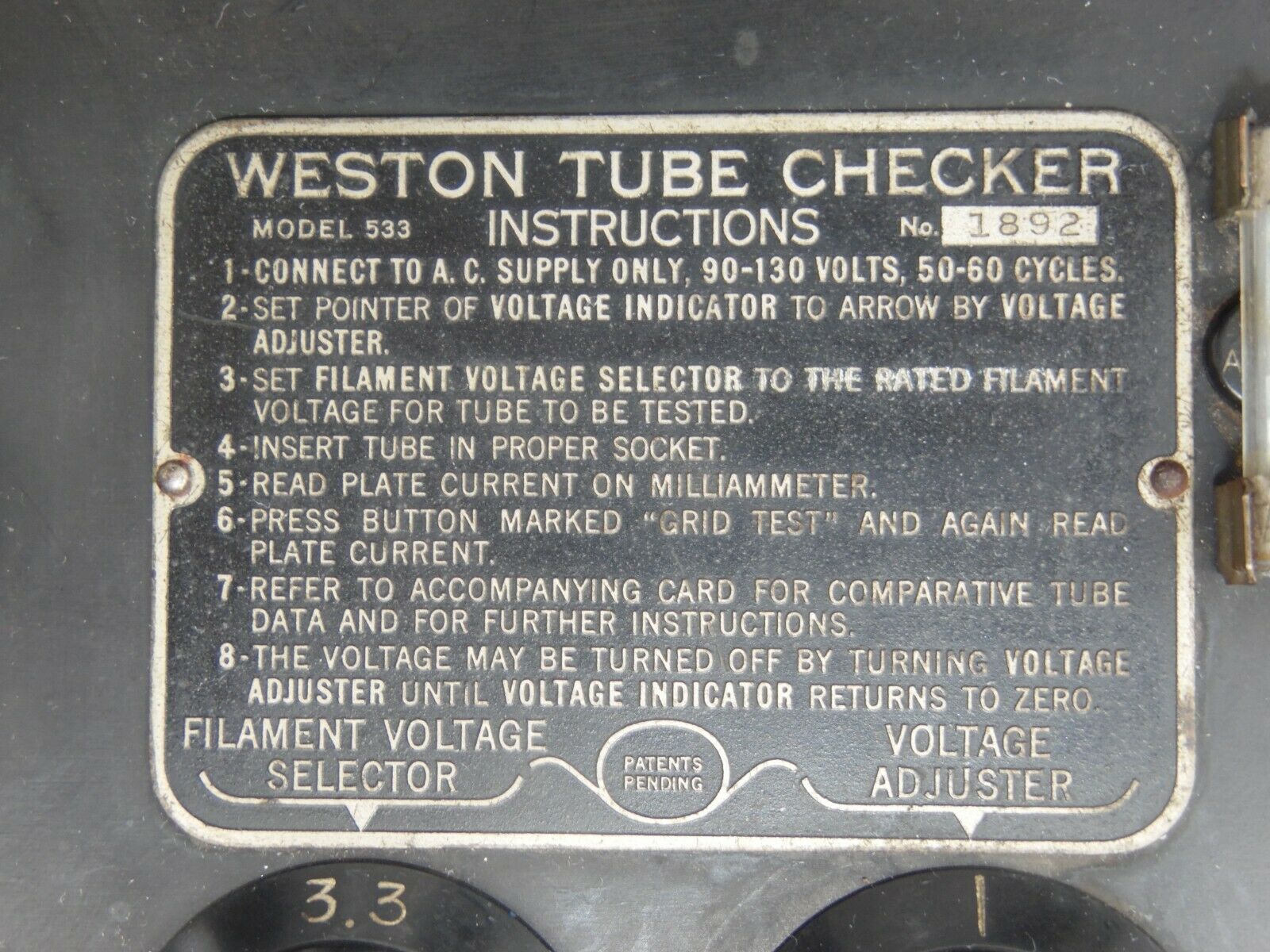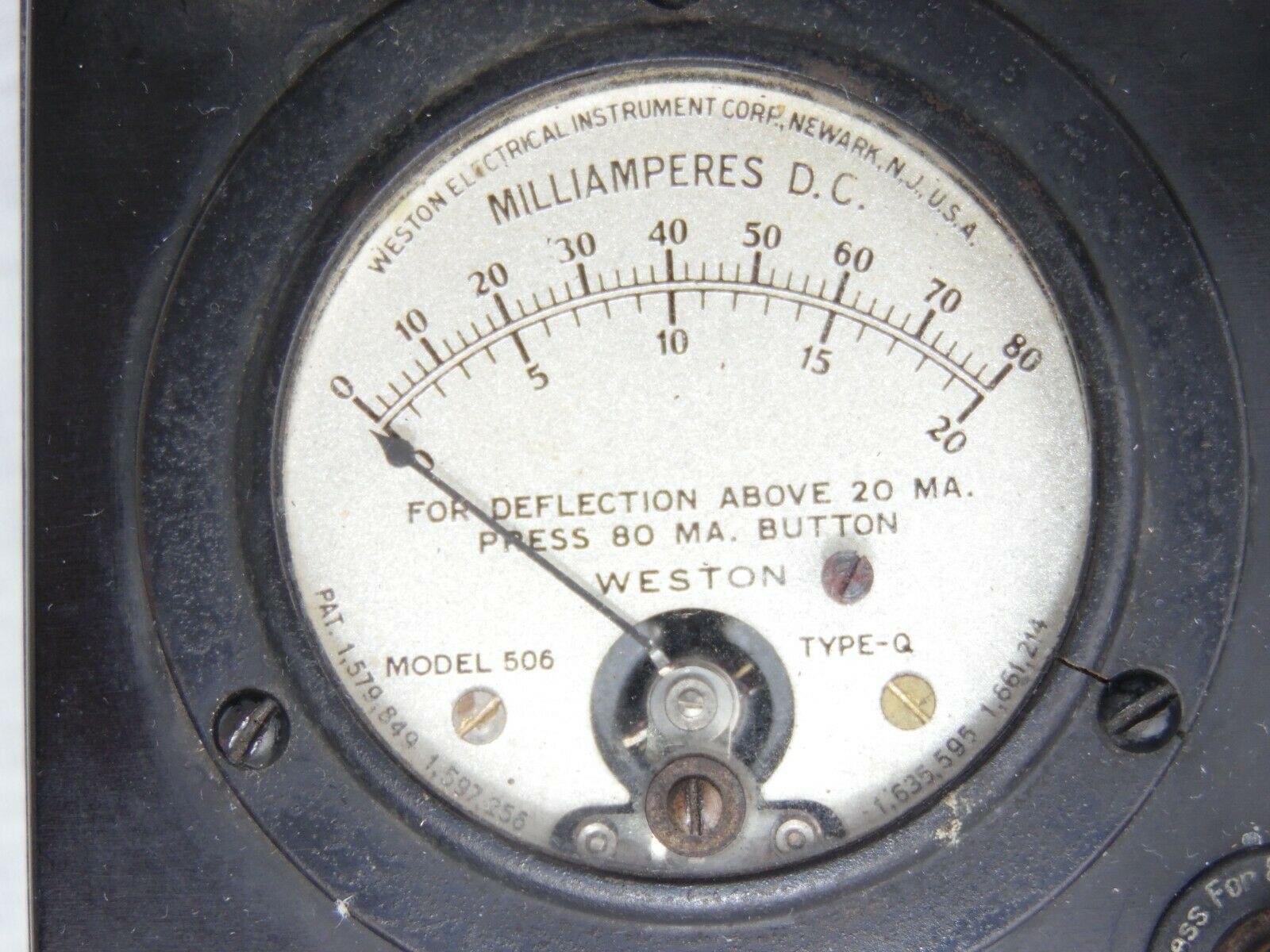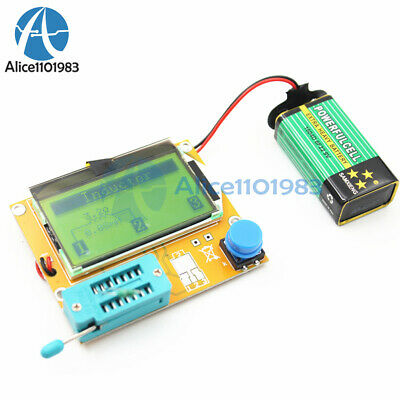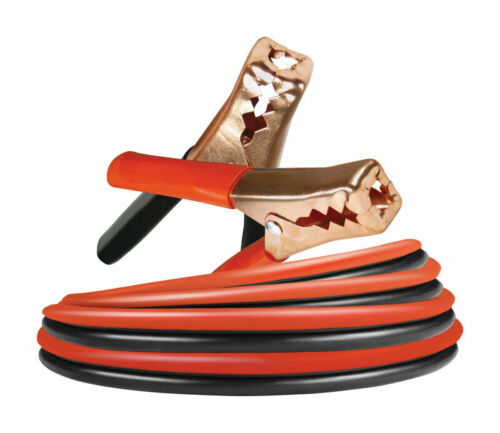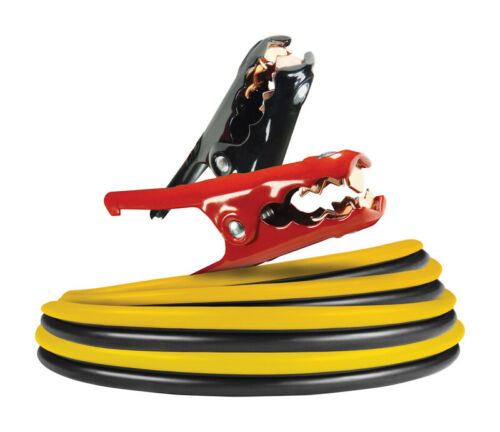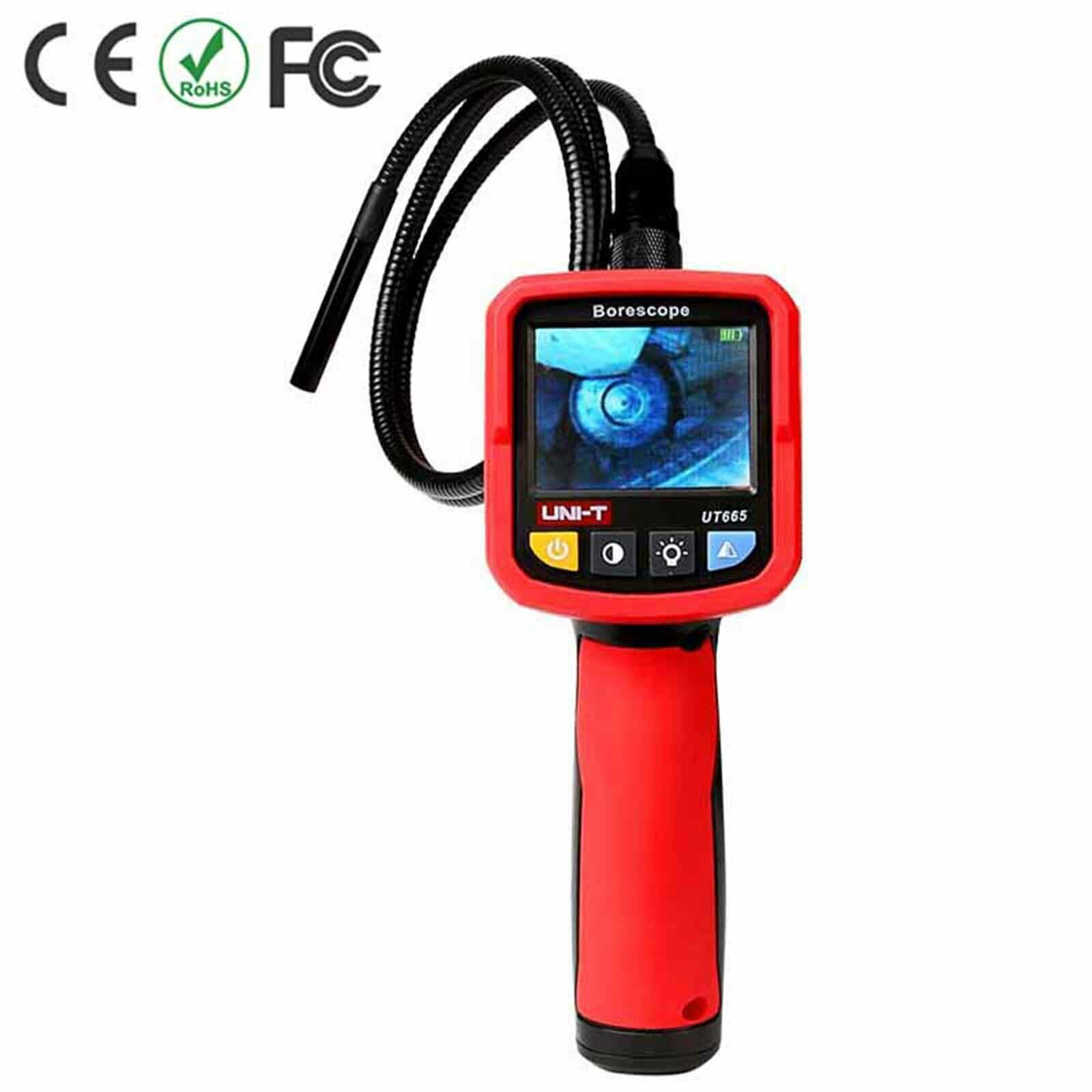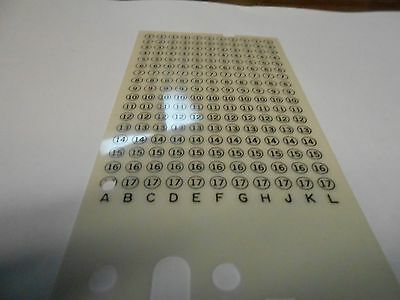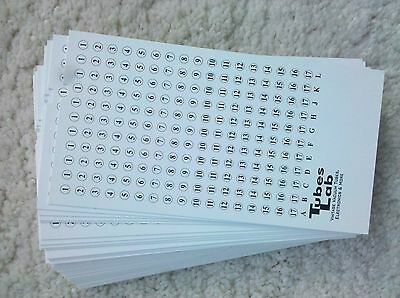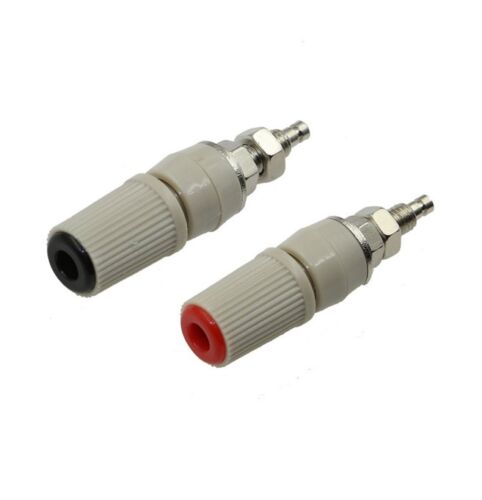-40%
Vintage WESTON TUBE CHECKER Model 533, Tested Working, BUT...
$ 5.54
- Description
- Size Guide
Description
Vintage (ca. 1928) Weston Model 533 Tube Checker. AC line (90 to 130 V) powered. Checks emission and amplification (via grid-shift plate current change) of most of the 4 and 5-pin tubes that were available in the late 1920´s (including the early McCullough and Rogers types with the heater connections at the bulb top, rather than the base).I checked one tube (a known good NOS #26) and got "reasonable" results (7.7 / 15.9 mA ... see photos), but I don´t have a copy of the operator´s manual or table of "good vs. bad" test numbers, so all I can say is that it appears to be basically "working", though I can´t vouch for the calibration; you should assume that it will need re-calibration (among other servicing), almost for sure. I am
including a copy off the schematic diagram
, as shown in "Rider´s Perpetual Troubleshooter´s Manual", though it clearly describes a somewhat different (maybe a year or two later) model.
Cosmetic condition is "pretty good" as can be seen in the photos: some paint loss on the metal base and engraved markings on the Bakelite panel, but no cracks, gouges or major dings.
Operating condition can best be described as "precarious". The original wiring insulation is brittle and flaking off in places. The original power cord was so bad (exposed conductors / shorted) that I ended up cutting most of it off and splicing in (rather crudely) a cord & plug that I had in a "junk drawer". A couple of wire-wound resistors show signs of having been over-heated, though maybe not quite burnt out.
WARNING
: This is probably one of the most dangerous testers ever built
, even when it was brand new. If you plan to actually operate this unit, you should be aware of the following safety items:
> The power cord connects via a non-polarized connection, just as originally, straight from the factory. I have not attempted to fix this.
> The power supply line fuse is located on the top side of the panel in an open, unshielded holder, close to one of the tube sockets, making it very likely that you will end up coming in contact with it as you insert or remove a tube.
> The metal bottom case is not grounded, just "floating" there, waiting for something inside to go haywire and make it go "hot".
> Given all of the above, you should only operate this tester using an isolation transformer, and even with that, you need to be REAL CAREFUL, especially with that exposed power line fuse.
So, even though I have found it to be basically "working", I am selling this item strictly
AS IS
with
NO GUARANTEE
that it will work properly and safely once you get it. Please consider this a "project" or "display" unit.


